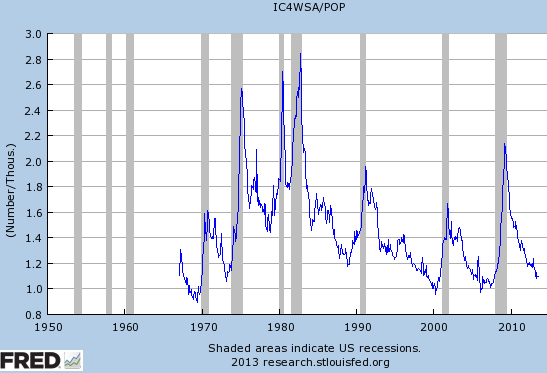As I mentioned before, when a blogger is on vacation he has the bizarre feeling that readers back home will be interested in his political/social/economic musings about his new location. A few weeks ago we had a family vacation in Bermuda. I took notes. I was reminded of this trip when I saw Matt Yglesias’s recent post showing a golf course on the coast of Bermuda. Even before I visited Bermuda I knew that it had once been ranked the richest country in the world (it has recently slipped to number three, below Qatar and Liechtenstein.) Naturally I wondered why.
Yes, I knew it had to do with some offshore tax haven business. But that still doesn’t quite answer the question. There are dozens of places like that from the Isle of Man to British Virgin Islands to Cayman Islands, Jersey Island, Panama, Gibraltar, Andorra, Monaco, San Marino, Luxembourg, etc., etc. Why was Bermuda so successful?
Let’s start with the fact that Bermuda is about 55% black.
Then consider that Bermuda only has about 65,000 people. That fits my “small is beautiful” in governance hypothesis.
Then recall that Bermuda is about 55% black.
Bermuda has the longest continually serving legislature in the world. That supports my view that democracy is great, the more the better.
Then recall that Bermuda is about 55% black.
Bermuda has no income tax, and I was told that people who don’t work aren’t given much welfare. Even the recent socialist-leaning government didn’t impose an income tax. Top rate: ZERO. Take that Saez. It’s a supply-sider’s paradise.
And did I mention that Bermuda is about 55% black?
OK, let’s stop dancing around the issue that everyone is thinking about—race. What can we make of the fact that the richest country in the world around 2008 was a majority black country? Maybe nothing. But I think there might be a few tiny lessons:
1. I’m told that the blacks in Bermuda were a mixture of slaves and free workers. But even the slaves were put to work in more skilled jobs (like shipbuilding) than the farming plantation slaves in the Caribbean or the American South. So I suppose that provides mild support for the view that some of the problems faced by blacks today are somehow related to the legacy of slavery. It seemed to me that the blacks in Bermuda now fill lots of pretty highly skilled jobs. But that’s just casual empiricism.
2. Bermuda’s economic model is obviously not scalable. A Bermuda with 65 million people would not do anywhere near as well. Nonetheless I don’t think we should dismiss their success with a wave of the hand. They have done better than other island nations with similar populations. Someone should try to figure out why it’s so well-governed.
Indeed I’d go further, and argue that every unusually successful nation is a sort of natural experiment. None of them should be dismissed as a “special case.” That doesn’t mean we should blindly copy everything they do, but places like Switzerland, Sweden, Singapore almost always offer us at least one useful lesson. So do even lesser regional successes like Chile, Botswana or Dubai. The Chinese understands this, which is why they are allowing Hong Kong to conquer China, one village at a time. (Qianhai is next up.)
In Bermuda they’ll deny they are rich, pointing to high prices. Don’t believe them. People in my home state of Massachusetts will also deny we are rich, pointing to lots of poor and working class people. But Massachusetts is one of the richest places on Earth, and so is Bermuda. There are no slums in Bermuda. How many majority black (or majority white!) countries have no slums? The housing stock is extremely attractive. These pastel colored homes on the water are being built as a low income public housing project!

I was told that the semi-socialist party that ruled Bermuda in recent years has slightly damaged the economy by sitting on their laurels, and that meanwhile other islands like Bahamas were copying their model and catching up. However the pro-business party was returned to power last year.
Perhaps I should have gone to the Bahamas. It’s much bigger than Bermuda (360,000 people) and is 90% black. And it’s roughly as rich as South Korea. So maybe Bermuda is worth emulating.
David Deutsch likes to sum up his philosophy as:
1. Problems are inevitable.
2. Problems are solvable.
I think problems are inevitable where different races with different cultures live in close proximity. And I also think those problems are solvable. Let the immigrants come.
PS. The title was a reference to fears that immigration will turn America into another Guatemala, or another Philippines, or another Haiti. Why not another Bermuda?
PPS. Massachusetts is actually the richest political entity on Earth containing more than 6 million people.
PPPS. The American “state” with by far the highest percentage of blacks is Washington DC (about 50%). It’s also by far America’s richest “state.” Call it “America’s Bermuda.”



